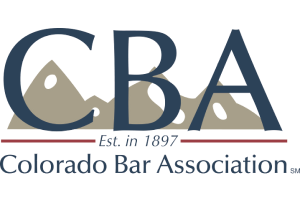Federal legislation lifting the estate tax exemption to fifteen million dollars per person in 2026 changes the framework that Colorado families and their advisors rely on. Many anticipated a return to a lower threshold when earlier provisions expired, yet Congress moved in the opposite direction. The most direct consequence appears simple: far fewer estates will…
Continue reading ›Boulder Estate Planning Legal Blog
A new children’s savings vehicle—created by Congress in July 2025 and codified at Internal Revenue Code §530A—is set to launch on July 4, 2026. Colloquially dubbed “Trump Accounts,” these custodial accounts pair low-cost, index-based investing with favorable tax treatment and, for certain newborns, a federal seed deposit. If you advise families or you are planning…
Continue reading ›Spousal Lifetime Access Trusts (SLATs) let you move assets out of your taxable estate while keeping practical access through your spouse. You fund an irrevocable trust for your spouse and descendants; your spouse can receive discretionary distributions; growth then occurs outside your estate. Many couples ask a natural follow-up: “Why not create two SLATs—one for…
Continue reading ›Your estate is no longer limited to deeds, bank statements, and stock certificates. Photos sit in iCloud, business records live in Google Drive, and part of your portfolio might ride on a hardware wallet the size of a flash drive. When you pass away, someone must marshal those digital assets, yet federal privacy laws often…
Continue reading ›Wealth you earned should open doors for loved ones, not evaporate in taxes whenever politicians alter the rules. Right now you hold a powerful tool known as the generation-skipping transfer tax (GST) exemption. Each person can shield almost fourteen million dollars from estate, gift, and GST taxes, then grow those assets for grandchildren, great-grandchildren, and…
Continue reading ›When you build a legacy in Colorado, you probably picture Rocky Mountain vistas, not the rolling plains of Wyoming. Yet Colorado estate planning grows stronger when it taps into Wyoming’s unrivaled asset-protection laws. Braverman Law Group can make that connection seamless because both Diedre Wachbrit Braverman and Ariel N. Okonsky hold active memberships in the…
Continue reading ›You have less than twelve months to lock in today’s record-high federal estate-tax exemption. After December 31, 2025, the amount you can pass to loved ones free of the 40 percent estate tax is scheduled to fall by roughly half—from $13.61 million per person in 2024 to somewhere between $6 million and $7 million on…
Continue reading ›Did you know that when you die, the federal government can impose a tax on your estate before your beneficiaries inherit your assets? In our line of work, we often hear rumors about how the government will raise or lower this estate tax, which can lead to uncertainty regarding how to best structure an estate…
Continue reading ›If you have children, you understand how important it is to save for your child’s long-term future. You want to set your kids up for success, and it is only natural to want to use best tools to help you achieve that goal. In this vein, there are three popular options that could help you…
Continue reading ›Every year, the Internal Revenue Service (IRS) announces new limits for the gift tax exclusion, the lifetime gift and estate tax exemption, and the limit on gifts to a non-US citizen spouse. Each change brings a shift in how those with higher net worths can achieve their financial goals. Many of our clients, for example,…
Continue reading ›















